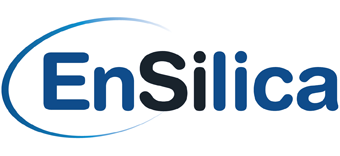Medical ASICs: Balancing Power and Performance in Wearable Technologies
When it comes to medical devices, navigating the intricate world of ASICs is something of a tightrope walk. Each step of the design phase involves striking a delicate balance between power, efficiency, and performance, where every gain comes at a cost. Medical ASICs are the beating hearts of potentially life-saving devices that must remain operational around the clock, yet are constrained by the finite capacity of their batteries. In this first part of our two-part blog series, we explore the nuanced tradeoffs that define ASIC design in medical applications, focusing on the harmonization of “always-on” functionality with the critical limitations of power resources, and how these factors interplay to shape battery size and device performance.

Balancing “always on” demands with battery capabilities
The need for “always on” functionality is now commonplace, but nowhere is it more crucial than in the development of wearable medical devices. This presents a formidable challenge when it comes to designing medical ASICs, where high performance meets the stark reality of limited battery capabilities. That’s why custom ASICs, the linchpins in these medical devices, are increasingly engineered with a keen focus on striking this critical balance. But it’s not easy. The battery’s capacity, a finite resource, automatically becomes the defining factor for the device’s energy management and overall functionality. This limitation is even more acute in devices that eschew traditional batteries for innovative energy-harvesting solutions.
However, there are ways of managing this trade-off, particularly when it comes to the strategic decision-making around the device’s duty cycle. Despite the “always on” label, an optimally designed medical device actually spends much of its time in a low-power state, conserving energy by remaining dormant until needed. This is where the ingenuity of custom ASICs shines, employing power gating as an essential tool to control leakage current in transistors – a persistent issue in medical ASICs.
The solution often lies in creating multiple clock and power domains within the ASIC, allowing power to be judiciously supplied to specific subsystems only when necessary. Typically, the most consistently active elements are a low-power timer and a memory buffer, which periodically activate the front-end circuitry for brief data conversion and storage tasks. This selective engagement, a hallmark of sophisticated ASIC design, is pivotal in marrying the necessity of “always-on” functionality with the stringent power limitations that are a hallmark of modern medical devices.
Optimizing performance with limited battery size
The pursuit of high performance in medical ASICs often leads designers into something of a struggle with battery size. High-resolution Analog-to-Digital Converters (ADCs), a staple in many medical devices for their accuracy and dynamic range, typically employ a sigma-delta architecture. This architecture, while cost-effective and precise, can be a significant drain on power resources. The challenge here is to achieve the necessary performance without imposing undue demands on the battery.
In sigma-delta ADCs, a digital filter section effectively trades sample rate for resolution, derived from a relatively simple analog input stage. This setup is ideal for managing interference in noisy environments, common in medical applications. However, the downside is the substantial energy required not just for the oversampling and filtering by the Digital Signal Processor (DSP), but also for the extensive digital post-processing on the host microcontroller. Each capture cycle, therefore, becomes a power-intensive operation, exacerbated by the high latency characteristic of sigma-delta converters, especially when high resolution is desired.
A more energy-efficient approach involves tackling interference closer to its source, using mixed-signal circuitry within the ASIC to address common noise sources. This strategy allows for a cleaner, lower-rate signal to be sent to the microcontroller, reducing overall circuit activity and, consequently, power consumption. Custom DSPs integrated into the ASIC can perform digital filtering of the oversampled signal, achieving two critical goals: reducing the dynamic range requirement for the ADC and enabling transmission of the filtered signal at a lower sample rate. This not only conserves power but also allows for the buffering of output samples within the ASIC, reducing the frequency at which the microcontroller needs to wake up for data processing. In some designs, only specific signal features or events, such as abnormal heart-rate readings, are transmitted, further minimizing power usage and maximizing the efficiency of medical ASICs.
Final thoughts
When it comes to designing medical ASICs, the tradeoffs between “always-on” functionality, performance, and battery size are not just challenges; they’re also opportunities for innovation and optimization. As we have explored, the key lies in intelligent design choices that balance these competing demands, ensuring that medical devices deliver on their promise of reliability and efficiency. Custom ASICs, with their ability to finely tune power states and manage energy consumption smartly, are the counterweights key to mastering this balancing act.
However, the exploration of power and performance tradeoffs is just the beginning. In the next article in this two-part series, we’ll delve into the equally critical aspects of functionality versus form factor and the balancing act between reducing the Bill of Materials (BoM) and managing costs. These considerations are pivotal in shaping the final design and effectiveness of medical ASICs, further demonstrating the nuanced complexity of ASIC design in the medical field. Remember, in this high-stakes arena, understanding and managing these tradeoffs is not just about technical proficiency; it’s about crafting solutions that ultimately enhance patient care and safety.
For more information, contact EnSilica’s expert team




